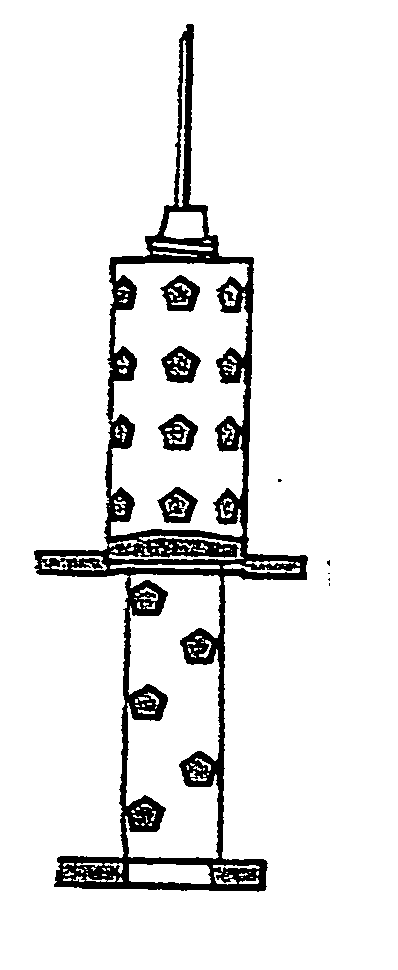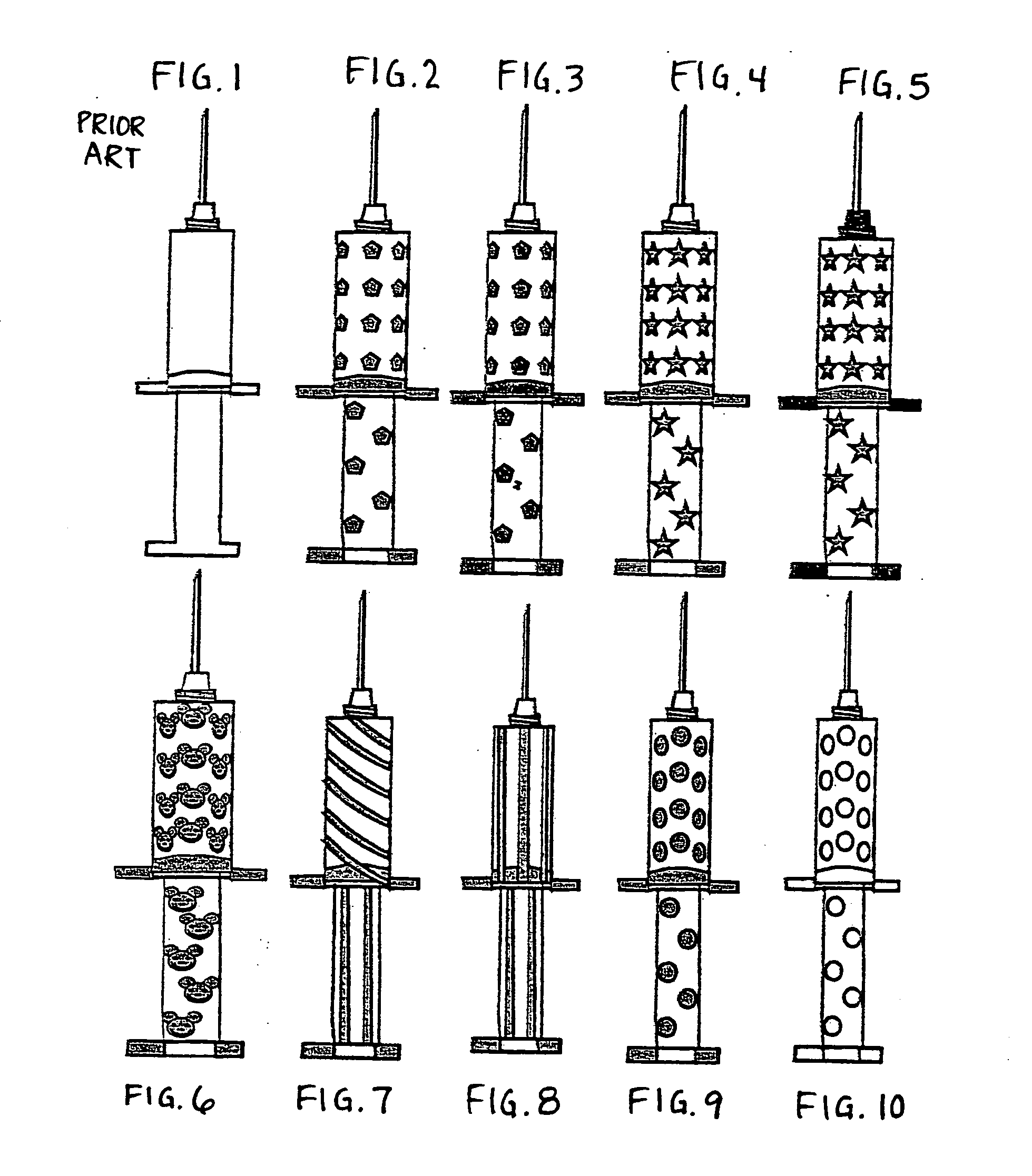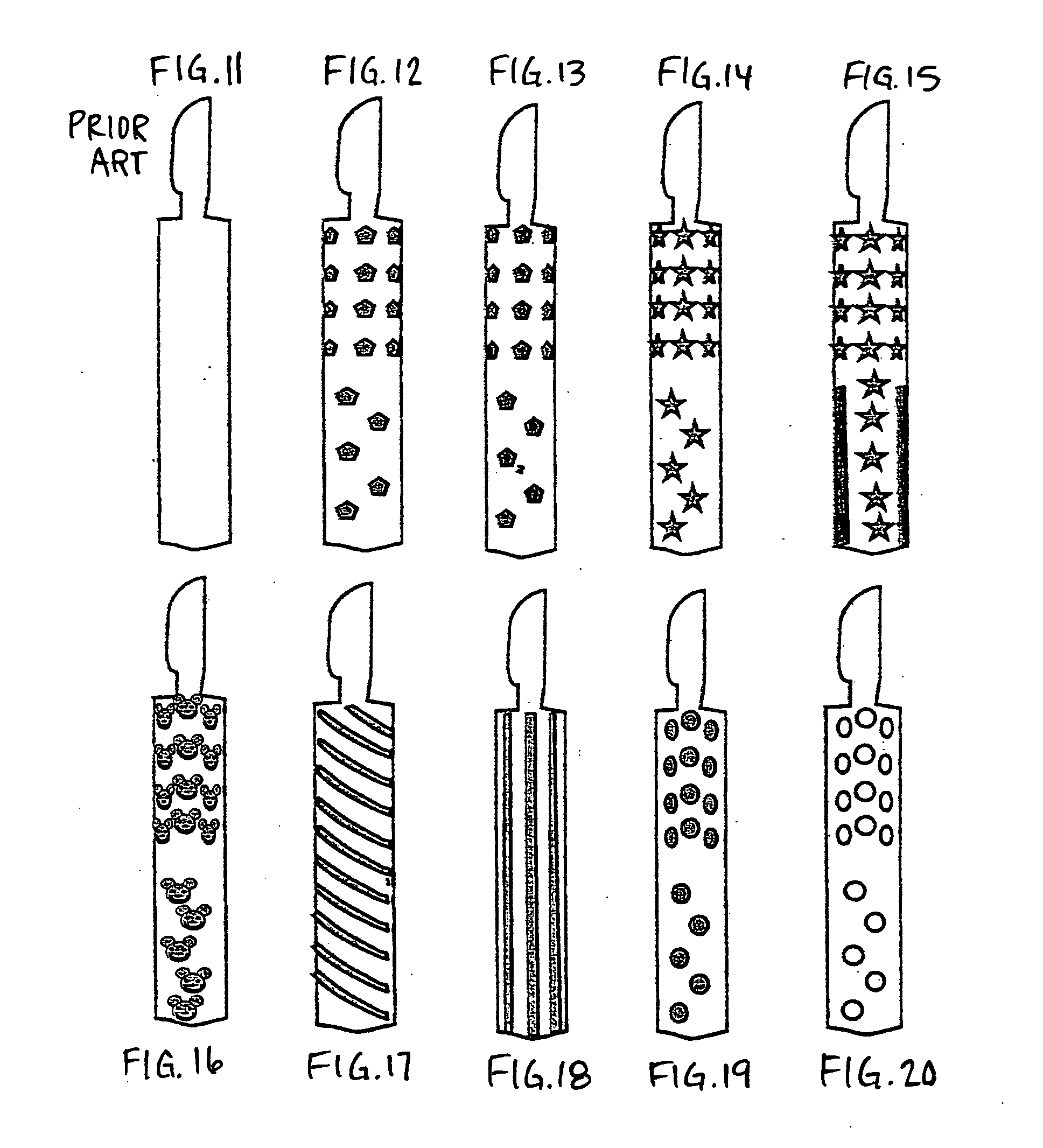Stress-reducing medical devices
a medical device and stress-reducing technology, applied in the field of medical devices, can solve the problems of patient dislike, anxiety, lack of intrinsic ornamentation, medical devices are typically bland in appearance, etc., and achieve the effects of reducing patient suffering, reducing patient fear of medical devices, and improving the medical environmen
- Summary
- Abstract
- Description
- Claims
- Application Information
AI Technical Summary
Benefits of technology
Problems solved by technology
Method used
Image
Examples
experiment b
[0064] A second experiment took the form of a clinical study of the affects of visually modified syringes on patients. Visually stimulating syringes were constructed. These included syringes with dramatic designs on the plunger, so that the visual aspects of the barrel remained optimal. (Specifically, six different plunger designs were used and the images placed on the plungers included raindrops, flowers, musical notes, smiley faces, peace signs, yin-yang, animal (fish), polka-dots, geometric, letters of alphabet, stars, spots; the colors included plain pastel colors and metallic colors, blue, purple, red, yellow, green, black, white, and pink.) Sixty patients were randomized and exposed to conventional syringes (in monochrome colors of green, blue, lime, or violet) and the visually stimulating syringes. Emotional responses to the syringes were determined with the Visual Aversion Scale, Analogue Fear Scale, and Analogue Anxiety Scale for each syringe design. The results were as fo...
PUM
 Login to View More
Login to View More Abstract
Description
Claims
Application Information
 Login to View More
Login to View More - R&D
- Intellectual Property
- Life Sciences
- Materials
- Tech Scout
- Unparalleled Data Quality
- Higher Quality Content
- 60% Fewer Hallucinations
Browse by: Latest US Patents, China's latest patents, Technical Efficacy Thesaurus, Application Domain, Technology Topic, Popular Technical Reports.
© 2025 PatSnap. All rights reserved.Legal|Privacy policy|Modern Slavery Act Transparency Statement|Sitemap|About US| Contact US: help@patsnap.com



